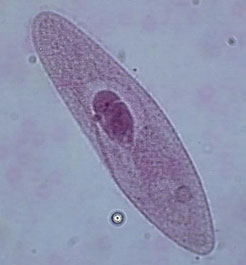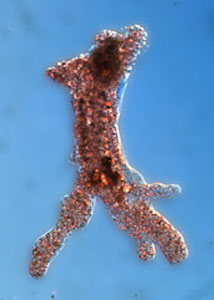Protozoa
What is a protozoa?

Protozoa are single-celled animals too small to see with the naked eye. Protozoa live in water individually or in colonies (plankton) and are an important food supply for other underwater creatures.
Many are parasitic in other animals, including humans. Protozoa are infamous for their role in causing diseases, and parasitic species are among the best-known protozoa. They feed by taking in other organisms such as bacteria and algae or organic particles such as animal or plant debris. Soluble nutrients such as sugars can be absorbed directly through the cell envelope. Parasitic protozoa take nutrients from the body fluids of their hosts.
Paramecium, Euglena, and Amoeba are well-known examples of these major groups of organisms.
Where can they be found?

Protozoans are found in moist habitats, but little is known about their specific geographic distribution. Because of their small size and ease of distribution from one place to another, many species appear to be broad-based and may be collected in similar microhabitats worldwide. Other species may have relatively narrow limits to their distribution.
Marine protozoans inhabit sediments and beach sands, surfaces, deep sea and cold Antarctic environments, planktonic habitats, and the algal mats and detritus of estuaries and wetlands. Actual knowledge of salinity, temperature, and oxygen requirements of marine protozoa is poor. Polluted waters often have a rich and characteristic protozoan fauna.
In contrast Soil-dwelling protozoa have been documented from almost every type of soil and in every kind of environment from the peat-rich soil of bogs to the dry sands of deserts. In general, protozoa are found in greatest abundance near the soil surface.